Awareness of Lean Startup has grown significantly this past year among our F500 clients. While the framework of Build, Measure, Learn is important to enabling bigcos to create faster, more disruptive ideas, inevitably our clients face common challenges implementing the method (many of which are summarized nicely in this HBR article). True adoption of Lean Innovation (the suite of tools, mindsets and skillsets needed to efficiently and effectively drive disruptive innovation) requires translation from theory to use, and lots of practice! Here are 5 big truths to drive Lean Innovation from theory to adoption in your organization.
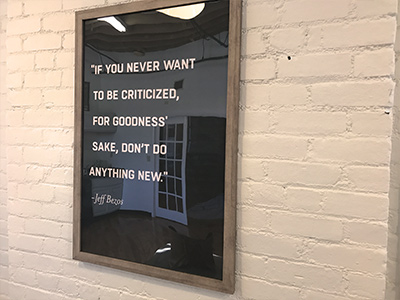
Truth #1: Everyone must adopt a growth mindset, including management.
The organization (including Lean experts, category teams and senior leaders) MUST adopt a growth mindset. That is, bigcos need to focus less on being an expert on Lean and MORE on experimenting and learning their way to disruptive innovation. Lean Innovation within bigcos is still relatively new, and most do not fully understand how to translate the theory within their organization. And that’s OK. Teams (and especially Lean experts, senior leaders) must get comfortable not knowing exactly how to adopt, and instead focus in on learning against the unknown.
The reality is that Lean shows up differently for every client we’ve worked with. Some clients have fully adopted a VC model for funding innovation, others have not. Some have adopted “core assumptions” early on in the FEI process, others are more focused on Design Thinking. Success with Lean is about experimenting what will work best within your bigco, which comes from a growth mindset and the willingness to learn.
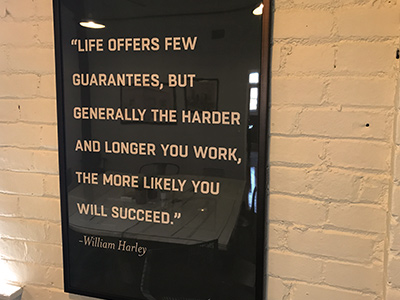
Truth #2: Dedicated Resources must have the right support
Dedicated resources are needed to truly ignite Lean within your organization. This resource allocation shows up in many forms:
- Entrepreneur in Residence Programs: Where teams are separate from FEI teams and operate as early stage, entrepreneurial ventures at various phases of development.
- Category experts: A Lean expert for a given category or organization.
- Short-term Teams: Assembled teams for a specific task for a predetermined time (e.g., 5-week Sprint like this one).
- External Resources: Bringing in external partners for a specific period of time to leverage as an extension of the team or solve for a specific job to be done (e.g., teams to create MVPs or run MVP tests on your behalf).
Perhaps more importantly though, is to provide the right support for these dedicated resources. This includes:
- Workspace: Consider placing these resources in a different workspace altogether (either on campus or at a shared, co-working space like WeWork).
- Communication: To enable full dedication, consider having different communication platforms (e.g. Slack) than the rest of the company.
- Decision Checkpoints: As teams are moving quickly and often can’t wait for the monthly Lead Team, consider having senior leadership office hours.
- Success Criteria: Leaders must recognize that base business metrics and success criteria aren’t super helpful when evaluating progress toward building disruptive new ideas and business models outside the core. They instead must focus on new metrics like # of ideas to market/progressing through the pipeline, overall speed to market, conversion or click through rates, or other metrics specific to the assumption being tested.
As you work through how your organization is dedicating resources to Lean, strongly consider what support is needed to be effective.
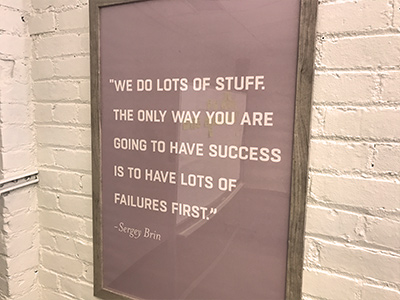
Truth #3: Proposition Development Must Evolve
The Build, Measure, Learn loop is meant to span the entire “funnel,” rather than being handed off at a specific point in the stage-gate process. A critical element of Lean Innovation is the Minimum Viable Product (MVP). MVPs are not just rough versions of a full initiative, but often pieces that build together in live, immersive and behavioral experiments. In this sense, qualification is cumulative and “launch” is a seamless scaling of what’s already been building. For most bigcos, this is scary because in theory, it means putting your brand or idea out in the wild before it’s been fully validated.
A few tips to reduce risk while still getting behavioral learning:
- The opt-in: Give consumers the opportunity to choose to participate in research on a MVP. Consumers who opt-in willingly to research are more likely to be understanding when issues with the product arise. For example, a group of Miami University students were asked to test the interface of the college’s new website. They were given the choice to opt-in to the test and were observed on how they interacted with the website.
- The second company or brand name: Another way to protect the original brand of a company is to “start” a second company or brand name. This small second company or brand name can either be under the the larger umbrella company/brand or completely separate so that if the product test were to fail, the larger brand/company reputation isn’t likely impacted. Later stages of testing might then more directly integrate the brand/company name.
- The small start: Because one of the most important things to remember about MVP testing is that tests are meant to be rapid and iterative, try running a Kickstarter or Google AdWords campaign. These campaigns often require fewer resources early in product development and can remain fairly low-profile. For example, HVAC.com launched an Indiegogo campaign to test reception to their first ever brand creation, Philanthro air filters. By creating the campaign and monitoring/digging into responses, HVAC.com gained early insights to feed into their product as well as marketing materials.
- The innovation sandbox: “Launch” the product or service with a small consumer segment, or a small group within a few important segments. Brands might leverage naturally limited groups (like a community group or a marketing database of consumers). Consumers won’t be aware that you are testing; they’ll simply respond or react based on their interest in the new product or service.
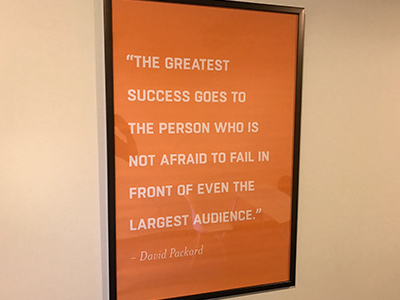
Truth 4: Smaller, Faster Steps
While the intent and result behind Lean Innovation is faster, more disruptive innovation, the path to success is through small, iterative steps vs. giant leaps. Typically, management is accustomed to big presentations, recommendations and milestones. In order for Lean to truly work, management must enable teams to make these steps. Often this will look like senior leaders playing advisor roles and delegating decision rights along the way.
Specifically, MVPs start small and gradually build their way to launch (assuming it makes it that far.) MVPs are centered around core assumptions and tested via iterative experiments. Until the team has gathered enough proven, in the wild learning to determine the path forward (double down on the investment, continue pursuing, re-vector, or abandon), senior leaders must enable their people to make necessary decisions along the way (type of MVP to get the learning, learning methods, funding needs to fuel the learning, etc).
As you begin implementing Lean, work with senior leaders to determine what this advisorship looks like and which decisions can be delegated to team leaders.
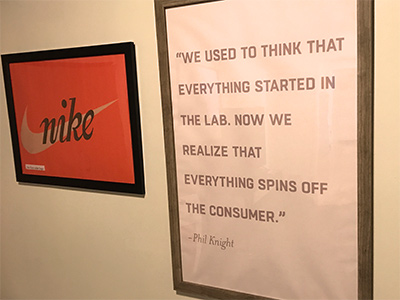
Truth 5: Learning Plans must be more Flexible
Typically, learning plans are carefully crafted with an entire year’s worth of plans scoped out with objectives, methods and costs. Lean Innovation however, is much more dynamic in nature as what we’re solving for dictates the next phase of learning/experimentation. As such, learning plans need to be much more flexible – rather than scoping out all of the studies in advance, consider having a relative budget for the project and allow the learning to dictate the type of method/funding needed to advance.
If you’re in the scenario of operating within a budget, consider a few scrappy ways to still get the learning you need to advance your MVP:
- Observation in-context or via Social Media: Searching and learning by hashtags has never been easier. Use these tools to your advantage to validate critical assumptions, especially around consumer pain points.
- Targeted “Missions:” Dedicated resources shouldn’t spend a day in focus groups – it’s inefficient and expensive. Send your team on targeted missions to have face-to-face conversations with consumers, knock on the doors of experts and start building a better understanding of consumer pain points as they are happening. For example, if you need to understand the world of cybersecurity – don’t recruit consumers. Research cybersecurity firms and set up a meeting, post a FB message asking for anyone who’s been hacked or go to a meetup group on cybersecurity in your area. All of these are free, quick and easy to setup!
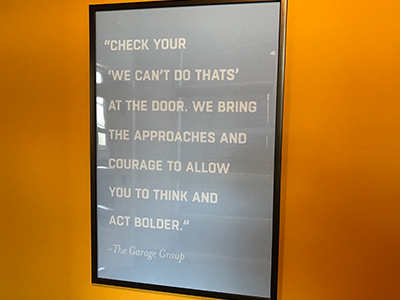
As Lean becomes more pervasive, we’re excited to work alongside our clients to continue the translation of theory to practice and enable faster, breakthrough innovation. Let us know any tips, tricks or enablers that have worked for you!

